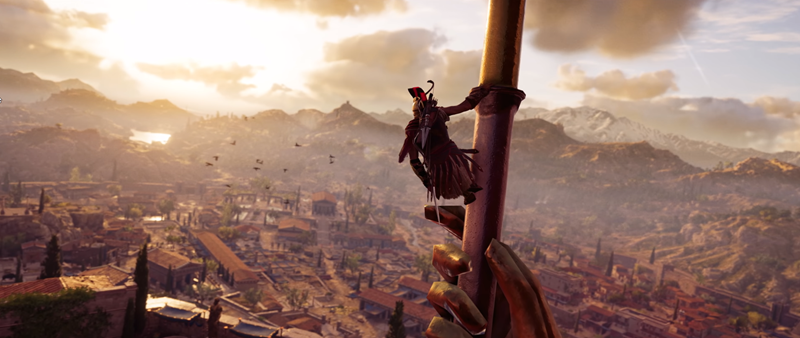Over the course of this quarter we have repeatedly discussed videogames as an art form, and many of those who oppose this idea would claim that video games are not art because they do not fit the traditional parameters of art and focus on play instead of quiet observation. But what is “art” in this argument?
Visual Artists would argue that art is a piece of work composed of physical media (Drawings, sculptures, paintings,) that an artist creates in order to evoke a response from a passive observer. Visual artists produce objects, things that can be held or viewed digitally as a self-contained work. (I am completely disregarding visual performance artists in this example but we will get back to that later.)

However, does visual art not exist within games? From minimalism to hyperrealism almost all videogames contain some visual component that is designed to evoke a response from the player. The only difference is this form of visual art can surpass traditional media and allow interaction between the player and the art. Non videogame games often rely on design elements of the physical game parts to subconsciously set the players expectations/set values/interpretations to certain visual symbols.

Even games such as hide-and-seek use the body as a means of performance art, letting the visibility of the body and composition of the environment evoke responses in the player (told you I’d get back to performance art). This is where visual art intersects with games by adding the role of the “active” observer.
An “active” observer or viewer is the ideal for most visual artists that aspire to create change in their audience. A piece of traditional art may carry a message, emotion, or lack thereof designed to make the viewer think and reevaluate their perception. But thinking is not the goal, impact is. The artist drives the audience to think in order to impact future actions/behaviors. The difference between visual art and games as art is visual art usually has some sort of delay between art and action whereas in games the effect is instantaneous. For example, a painting on violence/conflict between people would cause the audience to distance themselves as they reflect on the work, whereas in a game participating in combat with another character would bring the audience into the action and the consequences.

In this way, games can be considered the an incredibly impactful form of visual art, which is perhaps why there is so much resistance to the idea of games as art. Games promote actions before thought and thoughts reflect on actions creating a reflective space in which visual art elements such as design, environment, performance, and literal works of art can be interacted with instead of observed.


I also wrote on video games being considered art and didn’t even think of performance art when I was writing. I think that’s a really interesting example because when I think of performance art, I think of stuff like Marina Abramovic’s art. I think her work is readily considered as art, but a lot of her pieces could be classified as games. Like her piece, Rest Energy, where she held a bow and a man held the arrow(I think it was her bf?), but both of them were leaning back so that if the man let go or slipped, the arrow would stab her. This and other pieces where she invites the audience to interact also seem like games, but we think of it as performance art, further supporting video games as an art form. Side note, hide and seek as a performance art piece sounds fun.
I really loved this blog post! I completely agree with every point you made in your argument, especially the point regarding interactivity, which is what some people would use to argue that video games aren’t art. However, I think this is a really surface-level viewpoint on the art and craft behind games, because like you mentioned, an active observer is ideal when interpreting and absorbing art. Like a film critic’s job is to absorb and actively engage with the film that they are watching and critiquing. That in of itself is a form of interaction, so it wouldn’t be sort of a double standard to not call video games art just because of interactivity.